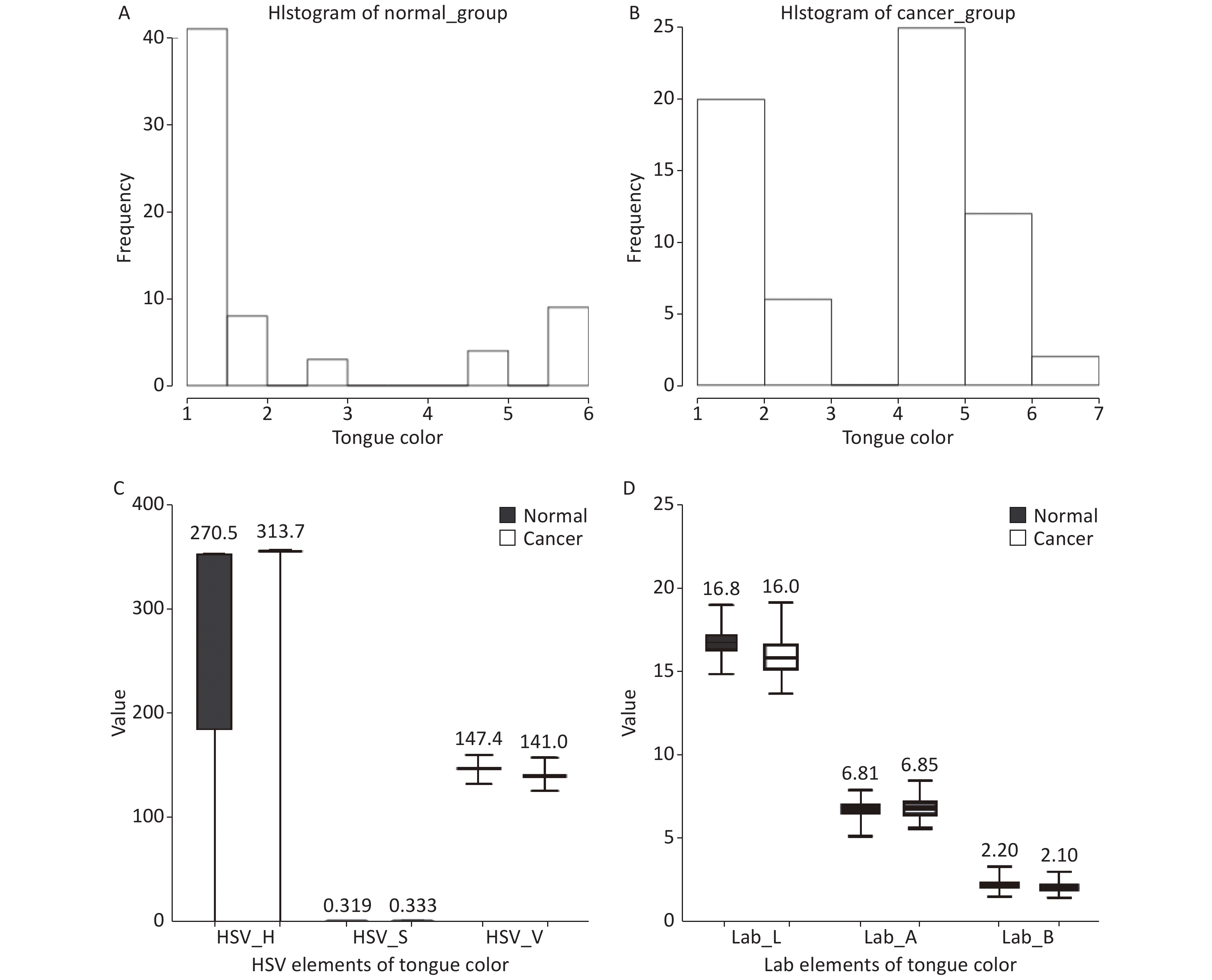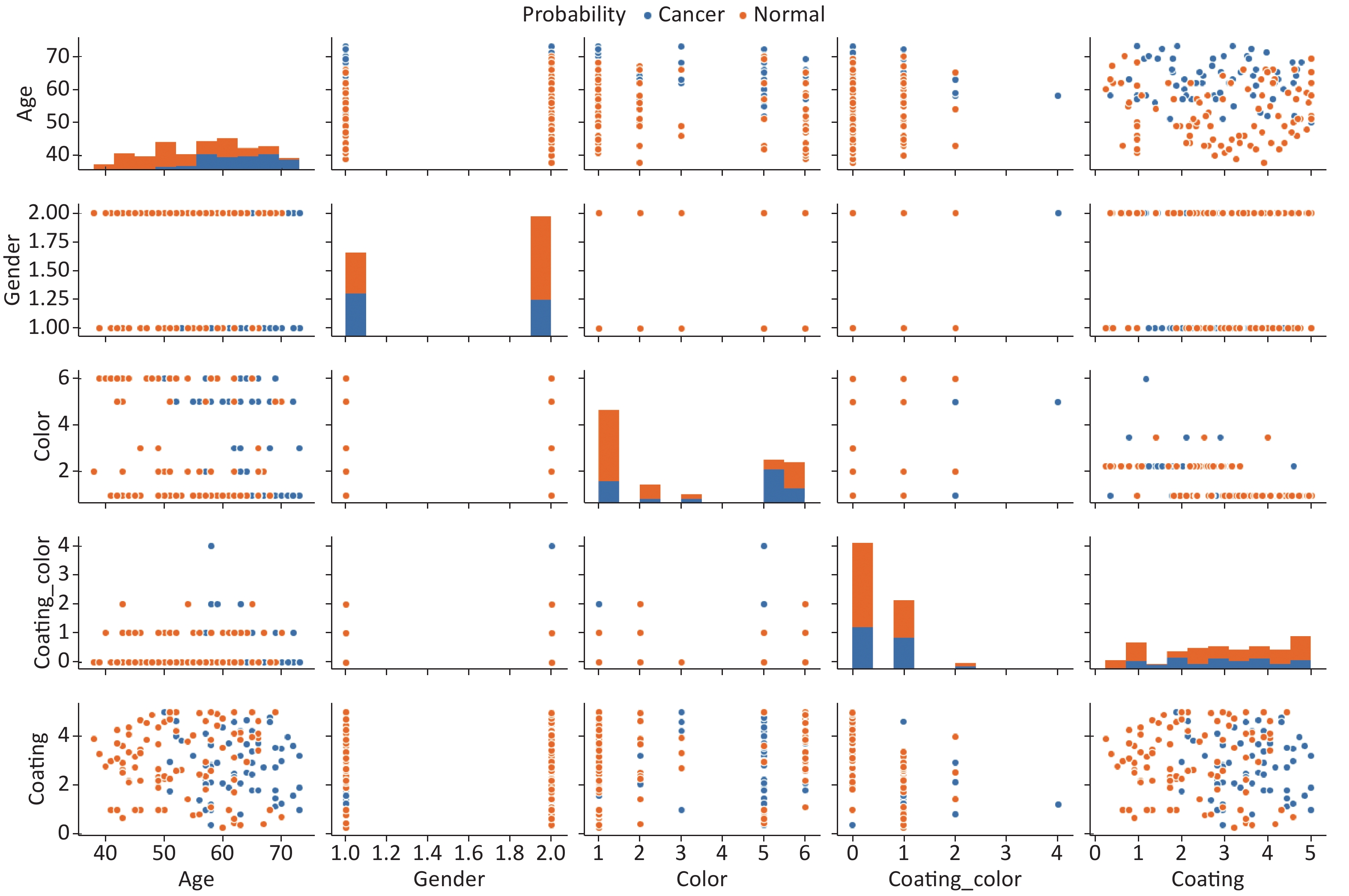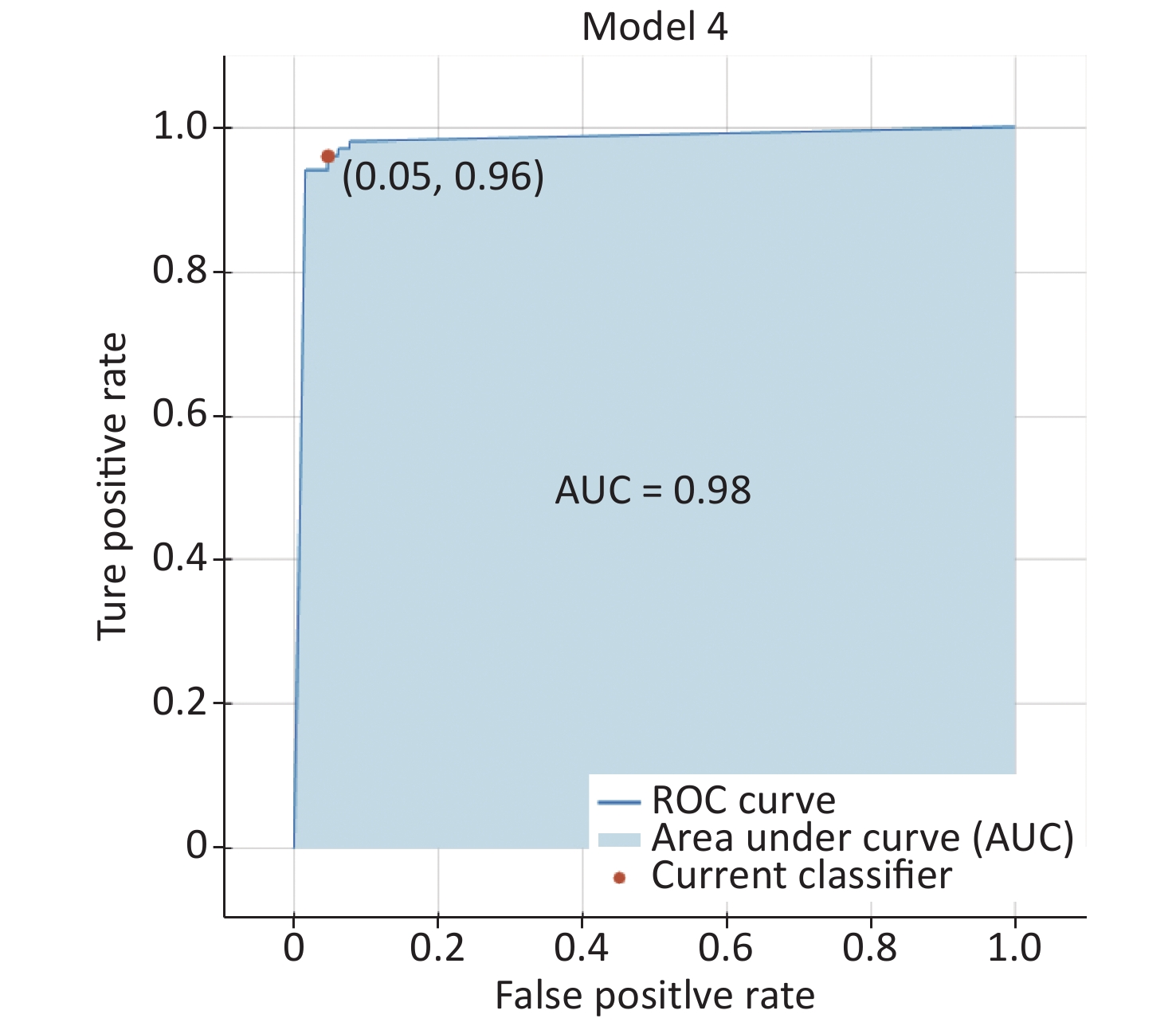-
Esophageal cancer is a common malignant carcinoma that occurs in the digestive tract and leads to around three million deaths worldwide. Patients commonly present with symptoms, such as dysphagia, cough, hoarseness, and pain in the esophagus. According to researches, smoking, alcohol consumption, exposure to radiation, contaminated food, chronic throat irritation, consumption of extremely hot beverages, genetic mutation, and dystrophia are influential factors in the development of esophageal carcinoma[1]. Diagnostic methods, such as esophagography, endoscopy ultrasonography, positron-emission tomography (PET), and biomarker identification are effective in detecting esophageal cancer. However, the disadvantages of these methods, such as false positive, image blurring, low sensitivity, infection, tissue damage and high cost, may result in misdiagnosis and inconvenience. In addition, the diagnosis of esophageal cancer at an early stage is difficult and has limited sensitivity using common diagnostic approaches.
Traditional Chinese medicine (TCM) is one of the four acient medical systems globally, which provides a plenty of effective methods for diagnosis and therapy in clinic such as acupuncture and phytotherapy. TCM method of diagnosis towards disease is generally based on observation, listening, inquiry and palpation. Tongue inspection is a simple and non-invasive clinical technique in traditional medicine for diagnosis. According to TCM theory, conditions of organs and the degree of disease can be reflected on the tongue through blood, qi and body liquids[2]. Experienced practitioners can judge about patients’ illness by observing main characters of tongue, such as tongue color, coating color, saliva and ecchymosis (Figure 1). As biomedical technology develops, modernization of traditional medicine is also proceeding to make the diagnostic process more automatic and intelligent. Currently, electronic tongue inspection apparatus is being adopted by many hospitals to assist doctors in diagnosing and has rendered diagnosis more quantized, objective, and convenient. To realize this process, image segmentation, clustering and artificial intelligent techniques are utilized to form a standardized report with values of each character of patients’ tongue image[3]. Considering all the characteristics from the tongue inspection report, practitioners can estimate the patient’s status of illness.

Figure 1. Tongue images taken with an electronic tongue inspection apparatus. All images have been collected with an electronic tongue inspection apparatus at the China-Japan Friendship Hospital. (A–D) are tongue images of healthy individuals, and (E–H) are tongue images of early esophageal cancer patients. As illustrated by the tongue images, significant differences can be observed in the color, coating, and other characteristics. A tongue inspection report with a quantized score for each characteristic can be outputted along with the operational process of picture acquisition.
Currently, electronic tongue inspection is gradually being applied to assist with the preliminary screening for cancer in clinics. In this study, we aim to discuss the sensitivity and efficiency of tongue inspection in the diagnosis of early esophageal cancer through significance test and binary classification. Original data from tongue inspection reports was collected from the China-Japan Friendship Hospital using an electronic tongue inspection apparatus. Two independent sets of tongue inspection reports were organized for further analysis, including 65 reports of early-stage esophageal cancer patients and 65 reports of healthy individuals. An electronic report of a tongue inspection contains scores for ten main characteristics, including tongue color, coating color, coating, moisture, fur, shape, tooth-mark, puncture, fissure, and dot (Figure 1). The original data also contained personal information of the patients, such as sex and age (Supplementary Table S1, available in www.besjournal.com). Further, significance test was determined using R language software. (It was developed by Robert Gentleman and Ross Ihaka from University of Auckland based on S language.) For each characteristic, vectors from the two groups were analyzed using a Wilcox test with an output of P-value, which represents a significant difference between the two samples. Histogram of tongue color versus age distribution was plotted with R language software. Boxplots of tongue color pixels were drawn with Prism 8 software. Python software was used to perform binary classification. The basic code for calculation was written according to online open-access analysis software.
Age (years) Experimental group (cases) Control group (cases) Male (36) Female (29) Male (21) Female (43) ≤ 49 0 24 50–59 28 21 60–70 37 20 Note. Table 1 indicates about basic information of two samples, including statistical information of age distribution and gender. The experimental group consists of 65 cases of early-stage esophageal cancer reports, and the control group contains 65 cases of electrical reports from normal people. Table S1. Basic information of contrast samples
The Mann-Whitney U test is a non-parametric test used to compare two independent groups of sample data which do not conform with normal distributions[4]. It indicates that two groups are significantly different if the P-value from the statistical test is no more than 0.05. Based on the Mann–Whitney U test theory, the P-values of each characteristic of the two samples were calculated with R language software. The P-value of each characteristic of tongue inspection is shown in Supplementary Table S2 available in www.besjournal.com. From the results of the significance test, we conclude that the tongue color of early esophageal cancer patients presents an obvious difference from that of healthy individuals (P = 0.021). Hence, tongue color scores from electronic tongue inspection have a sensitivity up to significant digits, in distinguishing early esophageal cancer patients from healthy individuals. Thus, tongue color can be considered as an index to diagnose early esophageal cancer with a significant P-value in a clinic. Further, tongue inspection could be a sensitive and effective method to screen for early esophageal cancer through analysis of the significance test.
Character W P value Tongue color 4140.0 0.0208 Coating color 3700.0 0.1063 Coating 3098.0 0.8048 Moisture 3244.5 0.4219 Exfoliative fur 2976.5 0.3203 Shape 3181.5 0.1826 Tooth-mark 3172.5 0.7876 Puncture 3316.5 0.2434 Fissure 3394.5 1.0000 Dot 3417.5 0.6987 Note. Table 2 indicates about statistical result of significance test towards each character. Wilcox test between experimental samples and control samples reveal difference of each character. The calculation process was fulfilled with R language programming software. Table S2. P value of each character
We also analyzed the distribution of tongue colors in both the early esophageal group and the normal group. The proportion of lighter color tongue is remarkably less, and the proportion of darker color tongue, as in dark red and purple, is significantly more in the early esophageal cancer group when compared with healthy individuals (Figure 2A–B). To further demonstrate this observation, the pixels of tongue color, including values of RGB (Red Green Blue pixels), HSV (Hue, Saturation, Value of color), Lab elements, were analyzed using Prism 8 software and represented as boxplot figures. The results of this analysis indicate that the average value of HSV_H in the early esophageal cancer group is larger and concentrated; hence, we conclude that the tongue color of early esophageal cancer patients tends to be more purple and darker than that of healthy individuals (Figure 2C). A boxplot of Lab elements revealed that the tongue color of early esophageal cancer patients is more reddish with a larger value of Lab_A as shown in Figure 2D. Moreover, a dark red tongue is very common in esophageal cancer patients and could be a significant index for diagnosis. Thus, experienced practitioners can diagnose early esophageal cancer based on the main characteristics of tongue inspection, especially significant indices, such as tongue color and coating color.
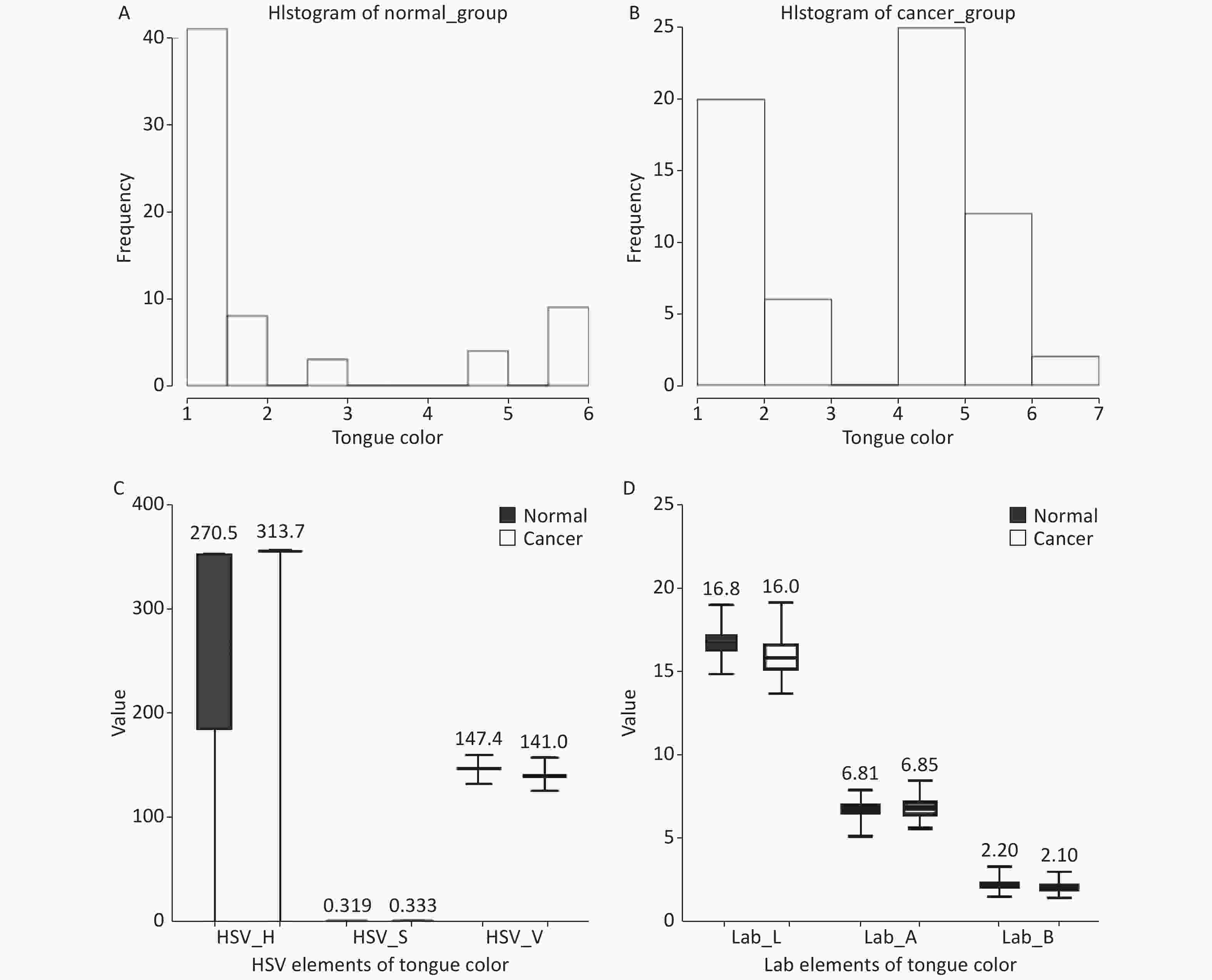
Figure 2. Tongue color distribution and boxplot of tongue color pixels for the early cancer and normal groups. The distribution of tongue color for the normal group and the cancer group has been plotted with R language software as (A) and (B) shown respectively according to the statistical data. Value of tongue color from 1 to 7 corresponds to light red, light, red, deep red, dark red, light purple and dark purple respectively. Values of tongue color pixels, including RGB, HSV and Lab elements, were outputted from the electronic tongue inspection apparatus and calculated. Through Prism 8 software, boxplots of tongue color pixels from two groups have been illustrated as (C) and (D).
Further, a histogram of age distribution revealed that the cancer patients are mostly older than 50 years. In comparison, the age distribution of the healthy individuals was scattered within a range of 35 to 70 years (Supplementary Figure S1, available in www.besjournal.com). Thus, esophageal cancer is more likely to occur at an older age. The distribution of sex in the early stage of cancer and healthy individual group indicates that the proportion of males in the cancer group is significantly larger (P = 0.008263) (Supplementary Figure S2, available in www.besjournal.com), which might be due to unhealthy living habits as drinking and smoking.
To further demonstrate the efficiency and accuracy of tongue inspection in the diagnosis of early esophageal cancer, values of the ten characteristics of the experimental and control groups were imported to Python software to conduct the accuracy of binary classification. Binary classification is a basic method to distinguish objects according to their fundamental features with algorithms, such as ANN, KNN, decision tree, random forest, and others. Recent reports have also discussed the possibility of processing problems with small sample sizes based on a specific algorithm[5]. The result of the binary classification indicates that the average accuracy of classification using different algorithms is nearly 94% (Table 1). Further, the Area Under Curve (AUC) of the Receiver Operating Characteristic (ROC) curve for binary classification based on the Support Vector Machine (SVM) algorithm was 0.98 with Matlab software as shown in Supplementary Figure S3 (available in www.besjournal.com), which indicates high accuracy of the model. The result reveals that the binary classification of these two groups based on values of the ten characteristics of the electronic tongue inspection reports using several algorithms was effective. On the basis of the results of machine learning algorithms to process tongue images and large-scale binary classification, we conclude that electronic tongue inspection is efficient and accurate in diagnosing early-stage esophageal cancer.
Algorithm Accuracy (%) Test accuracy (%) ANN 100.00 93.94 Decision tree 100.00 100.00 Gaussian 95.45 93.94 KNN 99.24 100.00 Linear SVC 100.00 90.91 LoG 100.00 93.94 Perceptron 95.45 96.97 Random forest 100.00 100.00 SGD 98.48 96.97 Table 1. Accuracy of binary classification with different algorithms
Moreover, several articles have reported that tongue color could be associated with blood glucose levels and glycoproteins[6]. The formation of tongue coating can arise from exfoliated cells, material metabolism, cell proliferation, apoptosis, immune cells, and cytokines[7]. Previous studies have also discussed the association of epidermal growth factor (EGFR) and tumor necrosis factor (TNF) expression levels with tongue coating formation[6]. Analysis of the correlation between tongue image and metabolite level of the blood could provide a mechanistic explanation for the efficiency and accuracy of tongue inspection in diagnosing early esophageal cancer. This would be significant for the application and scientific validity of TCM tongue inspection.
Diagnostic methods for esophageal cancer, including exfoliated cell examination, esophageal endoscopy, and biomarker identification, are effective. However, disadvantages such as false positives, tissue damage, low sensitivity, and high cost still exist. Tongue inspection is a common method of diagnosis based on the theory of traditional Chinese medicine. Now, an electronic apparatus can be used to acquire tongue images from patients and diagnose diseases based on AI algorithms. In this study, the sensitivity and efficiency of tongue inspection in diagnosing early esophageal cancer were investigated. We collected the original electronic tongue inspection reports generated from both early esophageal cancer patients and healthy individuals for further analysis. The results of the significance test for the ten tongue characteristics indicate that tongue color can be a significant index to assist with diagnosis. Additionally, the accuracy of binary classification of the early cancer group and the normal group is comparatively precise. Considering the results of the significance test and the binary classification, we conclude that electronic tongue inspection is a sensitive and effective method to screen for early esophageal cancer. Before conducting a histopathological examination, tongue inspection can be utilized to screen for early esophageal cancer on a large-scale owing to its non-invasive nature as well as sensitivity and accuracy with a decreased likelihood of infection and tissue damage. In addition, recent studies on image processing, algorithm implementation, and molecular mechanisms have been at the frontiers of biomedical engineering and medical imaging, and are expected to develop further[8]. Moreover, the application of tongue inspection in the screening of early-stage cancer, as well as the modernization of traditional Chinese medicine can contribute to this development and have a promising future.
All data in this article was collected from China-Japan Friendship Hospital and Cixian Institute for Cancer Prevention and Control. Thanks for their support and consideration.
Diagnosis of Early Esophageal Cancer Based on TCM Tongue Inspection
doi: 10.3967/bes2020.094
- Received Date: 2020-03-10
- Accepted Date: 2020-05-12
| Citation: | SONG An Yi, LOU Yan Ni, YANG Qian Xi, LI Dong Fang, SONG Guo Hui, HUANG Lai Qiang, YUAN Ke Hong, JIA Li Qun. Diagnosis of Early Esophageal Cancer Based on TCM Tongue Inspection[J]. Biomedical and Environmental Sciences, 2020, 33(9): 718-722. doi: 10.3967/bes2020.094 |


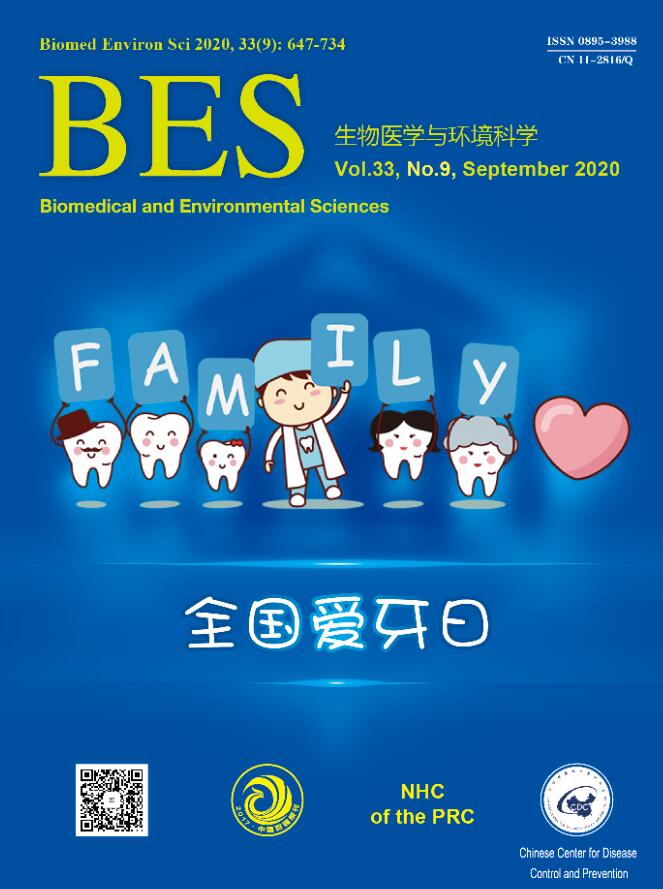






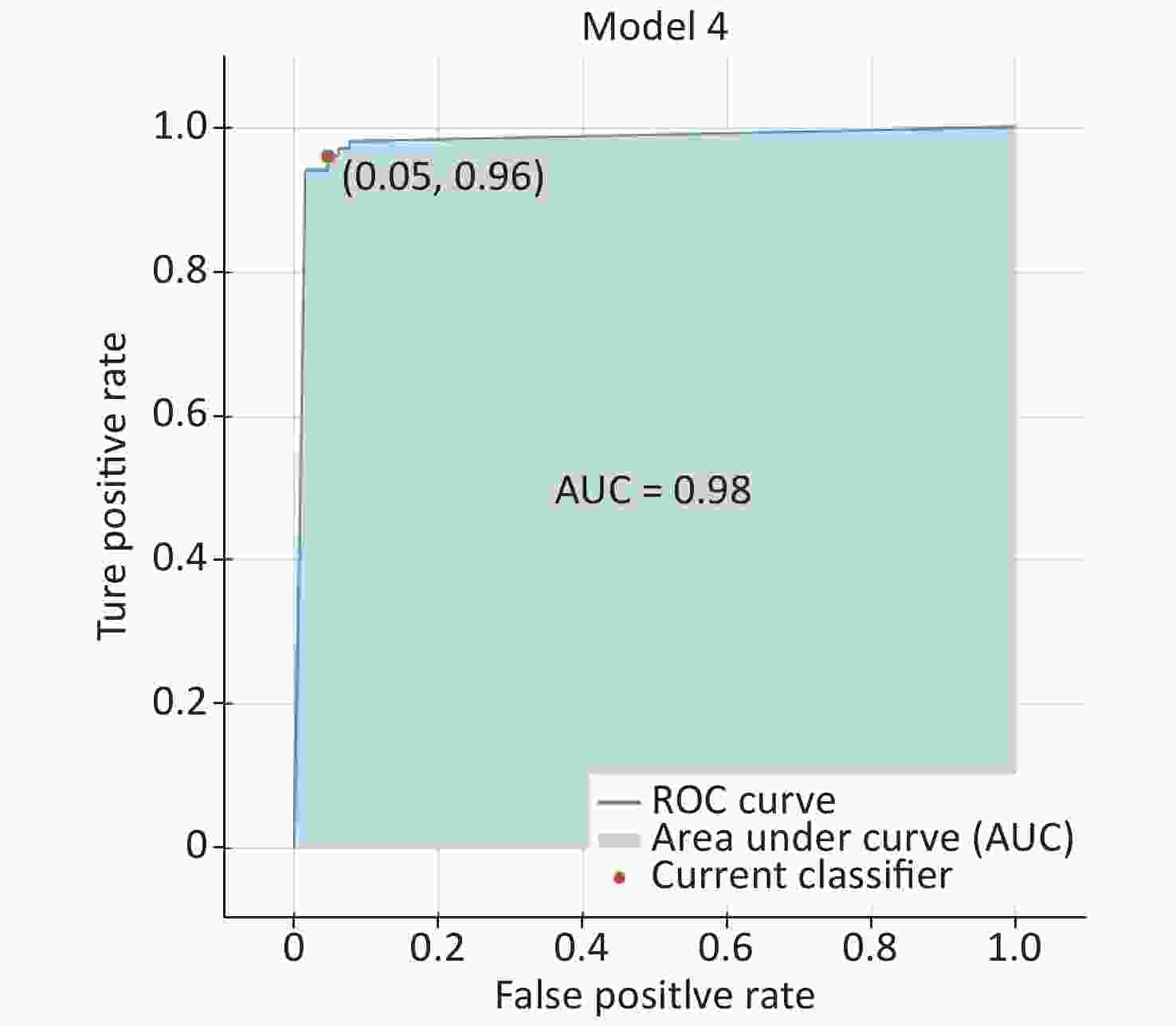

 Quick Links
Quick Links
 DownLoad:
DownLoad:
